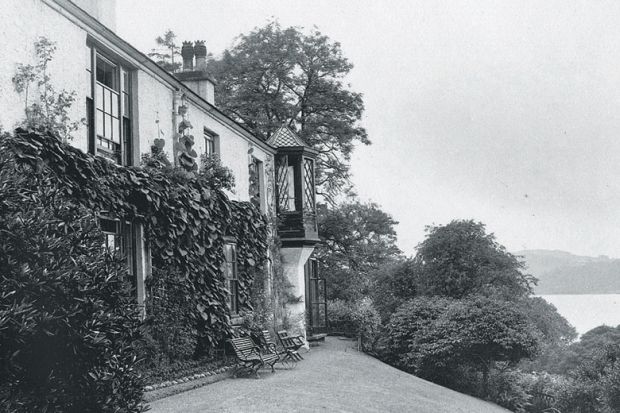Four decades after The Good Life was made, Tom and Barbara Good’s attempts to live an alternative, natural, self-sufficient lifestyle still make regular appearances on our television screens. It is appealing: sweetly innocent, gently humorous and full of ideas we all might try…if only we had time, and the world was simpler. In a culture dominated by technology and global commerce, we are being swept along, becoming ever more distanced from the natural world and the sources of the things we consume. Fighting this tidal wave is a counter-movement of looking to older, slower ways of living. This is, of course, not a new impulse: the ripple of anti-industrial, counter-consumerism pre-dates The Good Life by more than a century.
In the 1870s, at the height of 19th-century industrialisation, the art critic and political economist John Ruskin left his London house. He bought Brantwood, a home on Coniston Water in the Lake District, and tried to live a life of “sufficiency” there. Looking to medieval craftsmanship to define true “wealth”, he famously declared in Unto this Last that “There is no wealth but life”. His writings and lived example influenced others to do the same, and Green Victorians tells their story.
In a slim volume that can be read in an afternoon, Vicky Albritton and Fredrik Albritton Jonsson present the Victorian lifestyle choices of Ruskin and his followers as inspirations to help solve 21st-century problems. The book distils swathes of mostly archival research and offers lively accounts of Ruskin’s circle’s real experiments in a localised “culture of sufficiency”. Ranging from Ruskin’s own life to the idyllic childhood of Dora, Barbara, Ursula and Robin Collingwood – an upbringing said to have shaped Arthur Ransome’s Swallows and Amazons – this is an account rooted in an idealised past. Yet readers are reminded throughout that we face similar challenges: “Their concerns, like ours, arose from a sense that life was becoming less, not more, fulfilling in the age of mass consumption.”
We read of the revival of handicrafts such as spinning and weaving, and working with wood, copper, silver and brass; experiments with natural gardening; resisting a dam at Thirlmere that would feed Manchester; the founding of the National Trust. These “were all attempts to formulate a viable alternative to modern consumer society”, but they were not without complications and tensions. Pragmatism had to go hand in hand with idealism. Their proponents “were forced to compromise and adapt critically with regard to the world of advertising and consumption”. Yet they persisted with “voluntary sufficiency” in search of a good life. Their examples offer lessons, revealing “contradictions and blind spots in the vision of a post-growth society”, which may help as we look for solutions to destructive aspects of mass consumption, industrial production and the fossil fuel economy.
The real strength of Green Victorians lies in the authors’ acknowledgement that this quest for the simple life is neither straightforward nor really very simple. It is a life that requires conscious self-restraint and careful planning. It allows, even encourages, purchasing, but only with what we might now call ethical consumerism or mindfulness.
This is not self-sufficiency in The Good Life’s 1970s sense, but a broader notion of considered decisions about what is “sufficient”.
Rachel Dickinson is principal lecturer in English and interdisciplinary studies, Manchester Metropolitan University.
Green Victorians: The Simple Life in John Ruskin’s Lake District
By Vicky Albritton and Fredrik Albritton Jonsson
University of Chicago Press, 224pp, £28.00
ISBN 9780226339986 and 340043 (e-book)
Published 28 March 2016
Register to continue
Why register?
- Registration is free and only takes a moment
- Once registered, you can read 3 articles a month
- Sign up for our newsletter
Subscribe
Or subscribe for unlimited access to:
- Unlimited access to news, views, insights & reviews
- Digital editions
- Digital access to THE’s university and college rankings analysis
Already registered or a current subscriber?




